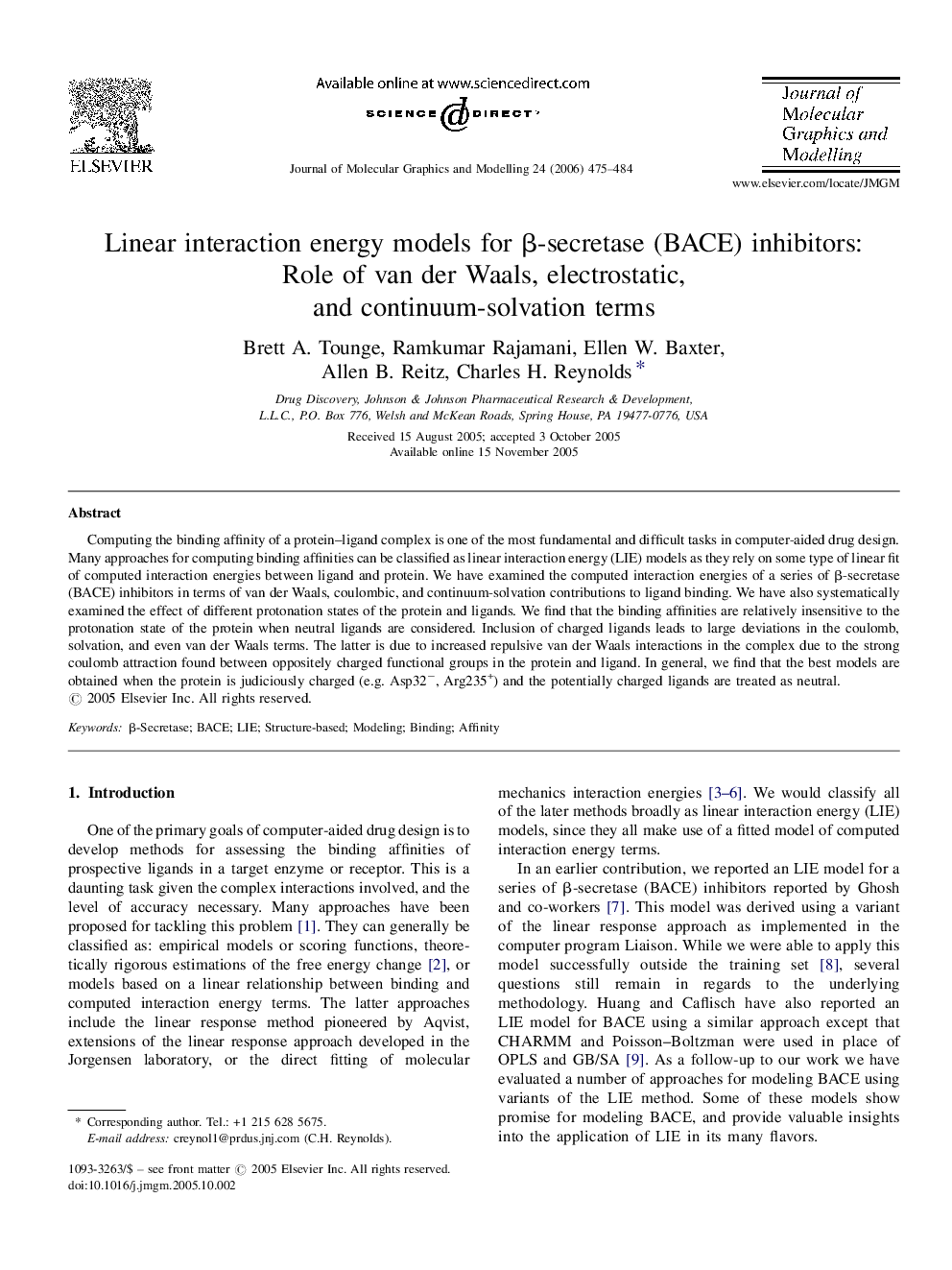| Article ID | Journal | Published Year | Pages | File Type |
|---|---|---|---|---|
| 444837 | Journal of Molecular Graphics and Modelling | 2006 | 10 Pages |
Computing the binding affinity of a protein–ligand complex is one of the most fundamental and difficult tasks in computer-aided drug design. Many approaches for computing binding affinities can be classified as linear interaction energy (LIE) models as they rely on some type of linear fit of computed interaction energies between ligand and protein. We have examined the computed interaction energies of a series of β-secretase (BACE) inhibitors in terms of van der Waals, coulombic, and continuum-solvation contributions to ligand binding. We have also systematically examined the effect of different protonation states of the protein and ligands. We find that the binding affinities are relatively insensitive to the protonation state of the protein when neutral ligands are considered. Inclusion of charged ligands leads to large deviations in the coulomb, solvation, and even van der Waals terms. The latter is due to increased repulsive van der Waals interactions in the complex due to the strong coulomb attraction found between oppositely charged functional groups in the protein and ligand. In general, we find that the best models are obtained when the protein is judiciously charged (e.g. Asp32−, Arg235+) and the potentially charged ligands are treated as neutral.
